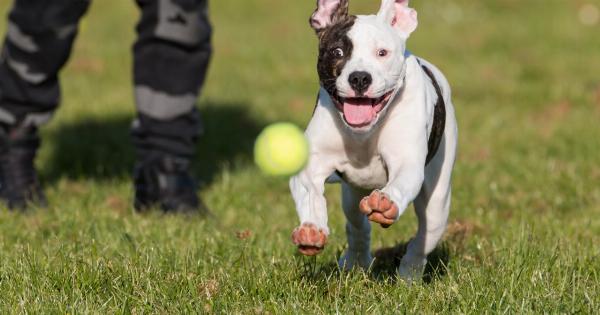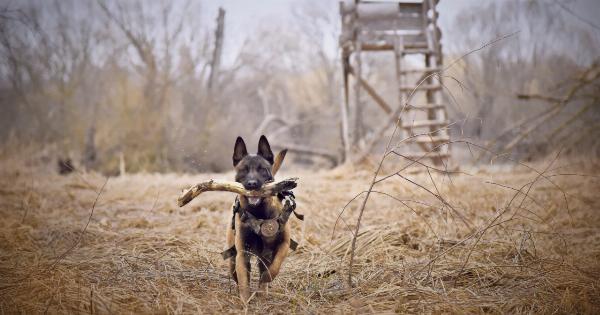Owning a dog can be a delightful and fulfilling experience. They bring joy, love, and companionship into our lives. However, sometimes our furry friends exhibit puzzling behavior that leaves us scratching our heads in confusion.
One particular behavior that can be frustrating for dog owners is the refusal to retrieve balls. In this article, we will explore some possible reasons behind this puzzling behavior.
Lack of Training
One possible reason why your dog is not retrieving the ball is simply because they were never trained to do so. Retrieving is a learned behavior and some dogs may not have received the proper training in their formative years.
If your canine companion was not taught to retrieve objects, it is highly likely that they will not understand what is expected of them when presented with a ball. Training is crucial to develop this skill and establish a bond of understanding between you and your pet.
Health Concerns
Another reason why your dog may not be retrieving the ball could be due to underlying health issues. Dogs, just like humans, can suffer from various ailments that affect their physical abilities and energy levels.
If your dog is experiencing pain, discomfort, or fatigue, they may not have the physical strength or desire to chase after a ball. It is important to monitor your dog’s health and visit a veterinarian if you suspect any underlying health problems.
Lack of Interest or Motivation
While some dogs are naturals at retrieving, others simply have little interest in playing fetch. Every dog has their own unique personality, and just like humans, they have their own preferences and likes.
It is possible that your dog finds other activities more engaging or rewarding than chasing after a ball. Some dogs may be more inclined towards playing with squeaky toys or engaging in interactive games with their owners.
Past Negative Experiences
Dogs have an incredibly sharp memory and past negative experiences can profoundly impact their behavior.
If your dog has had a traumatic experience while playing fetch, such as getting injured or being scolded harshly, they may associate retrieving a ball with negative emotions. This can lead to an aversion or fear of retrieving objects. It is important to create positive associations and rebuild trust if this is the case.
Inadequate Socialization
Dogs that have not been properly socialized may also struggle with retrieving balls. Socialization is the process of exposing dogs to various experiences and ensuring they are comfortable and confident in different environments.
If your dog has not been adequately socialized, they may feel anxious or fearful when faced with new objects or situations, such as a ball being thrown. Socialization can help build their confidence and make them more open to exploring and retrieving objects.
Age and Physical Limitations
As dogs age, their physical abilities may decline. Just like humans, their joints may become stiffer, and their energy levels may decrease.
Older dogs may find it more challenging to chase after a ball or may not have the same level of enthusiasm as they did when they were younger. It is important to consider your dog’s age and physical limitations when engaging in playtime activities.
Distractions and Environment
Dogs are incredibly curious creatures, and their surroundings can greatly influence their behavior. If your dog is in a new or unfamiliar environment, they may be more interested in exploring their surroundings than retrieving a ball.
Additionally, distractions such as other animals, people, or noises can also divert your dog’s attention away from the task at hand. Finding a quiet and secluded area can help minimize distractions and increase their focus on retrieving the ball.
Preferences and Personalities
Just like humans, dogs have their own unique preferences and personalities. Some dogs are simply not as inclined to retrieve objects as others.
Breeds with a strong prey drive, such as retrievers and spaniels, are more likely to have a natural instinct for retrieving. On the other hand, breeds with a higher independent streak may not find retrieving as enjoyable. Understanding your dog’s breed characteristics and personality traits can help you tailor activities that align with their preferences.
Training Tips for Ball Retrieval
If you are determined to teach your dog to retrieve a ball, there are several training tips you can follow:.
1. Start with Basic Commands
Prior to teaching your dog to retrieve a ball, ensure that they have a solid foundation in basic commands such as “sit,” “stay,” and “come.” These commands will provide the framework for more advanced training.
2. Use Positive Reinforcement
Positive reinforcement is a powerful training technique that involves rewarding your dog for desired behaviors. When your dog shows any interest in the ball or takes a step towards retrieving it, praise and reward them with treats or verbal praise.
This will create positive associations and motivate them to continue the behavior.
3. Break Down the Process
If your dog is struggling to retrieve the ball, break down the process into smaller, manageable steps. Start by rewarding them for simply showing interest in the ball, then progress to picking it up and finally bringing it back to you.
Gradually increase the difficulty level as your dog becomes more comfortable with each step.
4. Use a Longer Leash
If your dog tends to wander off or lose interest, try using a longer leash to provide them with more freedom while still maintaining control. This will allow them to explore their surroundings without completely veering off track.
5. Make it Fun and Engaging
Incorporate interactive elements into the training sessions. For example, use a squeaky ball or a toy that dispenses treats when your dog retrieves it. This will make the process more engaging and rewarding for your furry friend.
Conclusion
While it can be frustrating when your dog refuses to retrieve a ball, it is important to remember that every dog is unique and may have their own reasons for not participating in this particular activity.
By understanding the possible reasons behind their behavior and implementing the appropriate training techniques, you can work towards a stronger bond with your canine companion.































